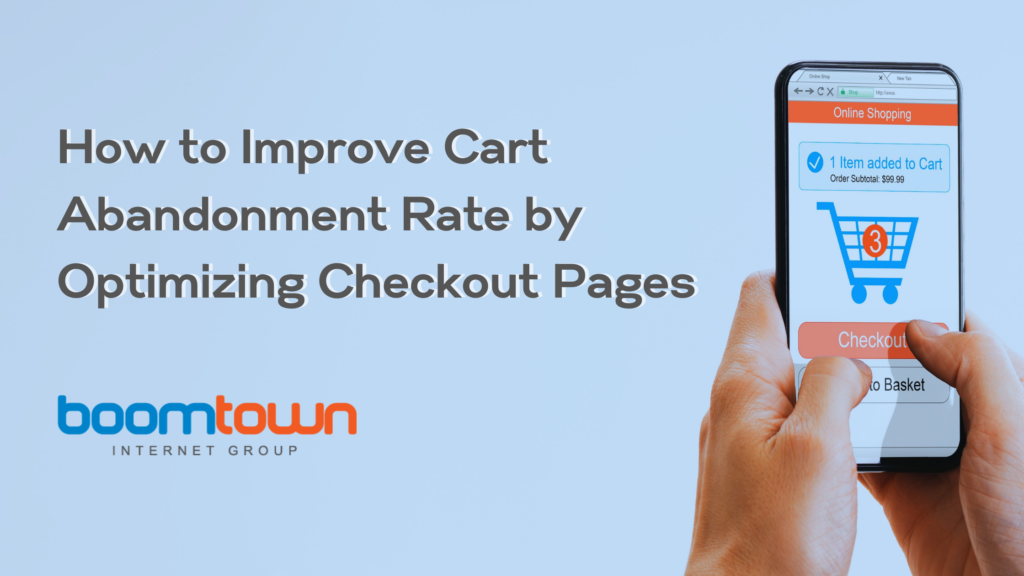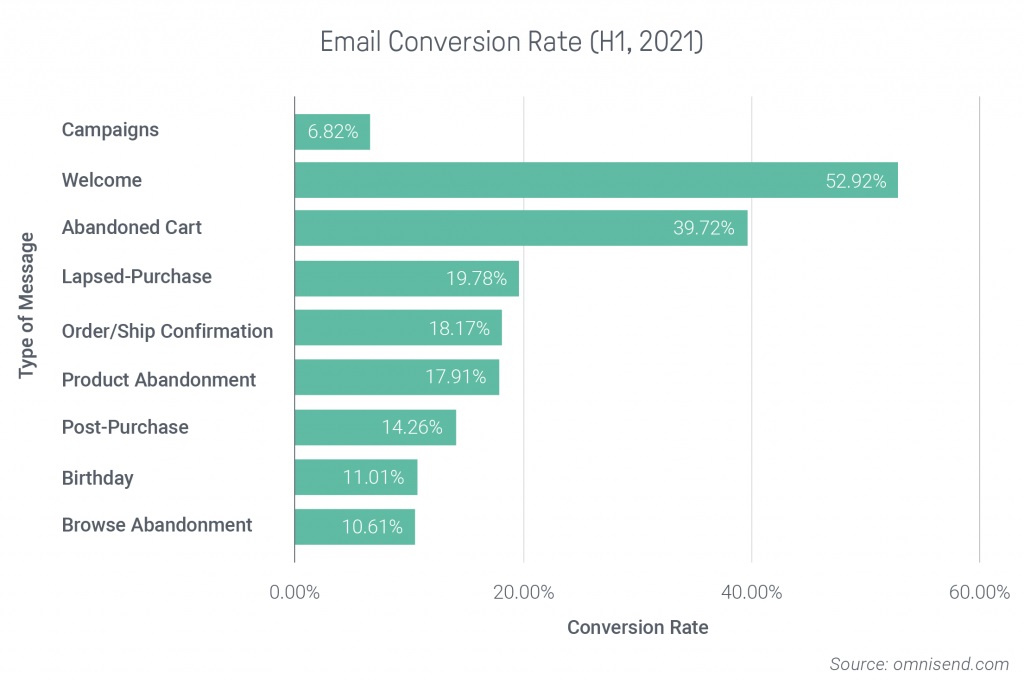Customers who have put items into your cart are almost at the finish line. What can you do to improve your cart abandonment rate and make it easier for customers to purchase your products and services? You may not think you can benefit from a review of your checkout process, but studies show that almost every website can reap bottom-line benefits by optimizing checkout pages and associated email and SMS messaging. This does not necessarily mean a lot of coding or changing the structure from multi-page checkout to single progressive checkout either. Small changes can have big results.
Let’s Look at the Data on Abandoned Carts
The Checkout Benchmark data from Bold-powered sites referenced data from 3 million checkout starts and 1.5 million checkout completions. The study showed that almost all websites will benefit from improvements on mobile and table checkout, but that the top performers on mobile do the following things in the checkout process:
- Display estimated shipping and taxes at beginning of the checkout
- Pre-populate address and store payment information for repeat shoppers
- Provide payment alternatives – in particular, PayPal
- Have options for shipping and delivery
- Allow discounts using loyalty points
- Make recommendations and offers during checkout.
While 70% of all eCommerce traffic comes from mobile devices the orders are smaller on mobile and mobile ends in just 55% of all checkouts. What happened to the other 15%? The study suggests that customers in the checkout process frequently edit their carts. This is often easier on desktop websites, and mobile shoppers can become distracted or frustrated.
Which is Better, Single Page or Multi Page Checkout?
The study found there was virtually no difference in cart abandonment rates and successful checkouts between single and multiple-page checkouts. However, testing and knowing your customer preferences will help you make the right decision for your cart.
While the most often cited reasons for shopping cart abandonment is price and shipping costs, it is possible to make the shopping experience better for users on various devices by testing whether single page, progressively scrolling or multi-page checkouts work better. Step one, no matter the device, is to remove all information that is not necessary from the checkout process.
Overall, single-page checkout has less distractions and it is faster.
- Faster and simpler because there is no navigation. Shipping, billing, delivery, cart edit are all on a single page.
- Less confusing for mobile shoppers.
- Ideal for mobile customers who make repeat purchases.
- Can provide options like guest checkout to simplify forms and move right to payment.
You can use these tips to optimize your single page checkout process:
- The optimized checkout page should look simple and uncluttered with few steps and nothing redundant.
- Use easy-to-see buttons and make the process linear and very clear.
- Display your online chat prominently and provide your customer service phone number.
- Have an option to auto-fill the billing address from the shipping address OR allow users to add a different billing address.
- Display the customer’s steps as they progress through checkout so they are never confused.
- Make the cart icon prominent in the upper right so it is easy for customers to keep shopping or return to their cart and make changes.
Consider a multi-page checkout process if your products are bundled, complex or expensive. Customers understand that purchasing these types of products will take longer, and require more steps. During an optimized multi-page checkout you:
- Still need to remove distractions and follow a linear flow that is easy to chart progress.
- Still need to make sure pages load quickly – especially on mobile devices.
- Can get the customer to fill out more information.
- Can add information to the cart to allow for cross-selling and up-selling.
- Can offer different payment gateways and payment options such as monthly payments.
- Can offer gift options and other customized offers.
Offer Mobile Wallet Transaction (Google and Apple Pay) Options
We all know the pandemic lockdowns forced huge changes in online shopping behavior. In 2021 research showed the market share of Google Pay 3%, Samsung Pay 5%, and Apple Pay 92% for mobile wallet transactions in the US. More importantly, a study from Cornerstone Advisors in late 2020 showed that 80% of smartphone users have a mobile payment app on their phone (PayPal is on almost 70% of smartphones). About 40% of Apple Pay users use the app to make purchases every week, and 30% of Google Pay users do the same. All three of these companies have made great strides in security, offering checking accounts, and generally making the apps easier (with single tap) and safer (with finger and facial recognition) to use.
Shoppers Want to Edit Their Carts
When customers shop, they often want to save items in their carts for future reference and comparisons. For this reason, carts need to be easy to edit – especially in areas such as shipping, delivery times and instructions, changing the quantity of an item, and deleting items. If shoppers can’t edit these cart details easily, this often increases cart abandonment rates. In fact, mobile shoppers try to edit their carts over 40% of the time.
How to Optimize Checkout Page and Processes:
- If possible, offer free shipping. A study by Junglescount clearly shows the benefits offered by free shipping. 93% buy more products and 58% add more items to the cart to qualify for free shipping. Checkout completion on desktop with free shipping is around 56% while only 45% on mobile. In both device types, an addition of 10% in shipping fees caused checkout completion to call by about 5%.
- Offer digital payment options. The study also found that PayPal is the digital payment choice for 38.7% of all orders.
- Be transparent about shipping fees. Showing shipping upfront before getting to the specific checkout step improves cart abandonment rates.
- Remove the burden on the customer of filling out the entire form. Try auto-filling customer addresses using Google Maps API as soon as a user starts typing in the address fields. This also helps ensure accurate address data.
- Validate all fields as the customer enters them rather than waiting until they hit the “Next” button. This improves usability making it easy for the customer to find and correct their mistakes.
Optimize Your Abandoned Cart Email
One way to lure customers who added a product to their cart, but did not complete the purchase is by using an email and SMS workflow triggered by cart abandonment. This workflow may include the promotion of a best-selling product. In 2021, about 40% of people who clicked on an abandoned cart email made a purchase, according to data provided by Omnisend. Successful cart abandonment campaigns can become more than 25% of your total email revenue while comprising less than 1% of your email marketing sends.
Optimize Order Confirmation and Other eCommerce Transactional Emails
The same Omnisend data indicates that a quarter of all customers who click on an order confirmation message end up making another purchase. This shows the importance of adding personalized incentives to all emails regarding an eCommerce transaction to encourage future sales.
Pay Attention to All Automated Emails
Omnisend also noted that there are many other emails which are worthwhile to revamp, including Welcome, Lapsed-Purchase, Order/Shipping, Post-Purchase, and even Birthday emails.
Optimize Checkout Page and Offer Email Incentives
Optimize checkout page and process on both mobile and desktop to be as easy and frictionless as possible. By offering multiple payment options and following up with incentives via email, you can improve cart abandonment rates. Why leave people who are ready and eager to purchase products and services feeling frustrated, when you can turn them into happy and returning customers?



